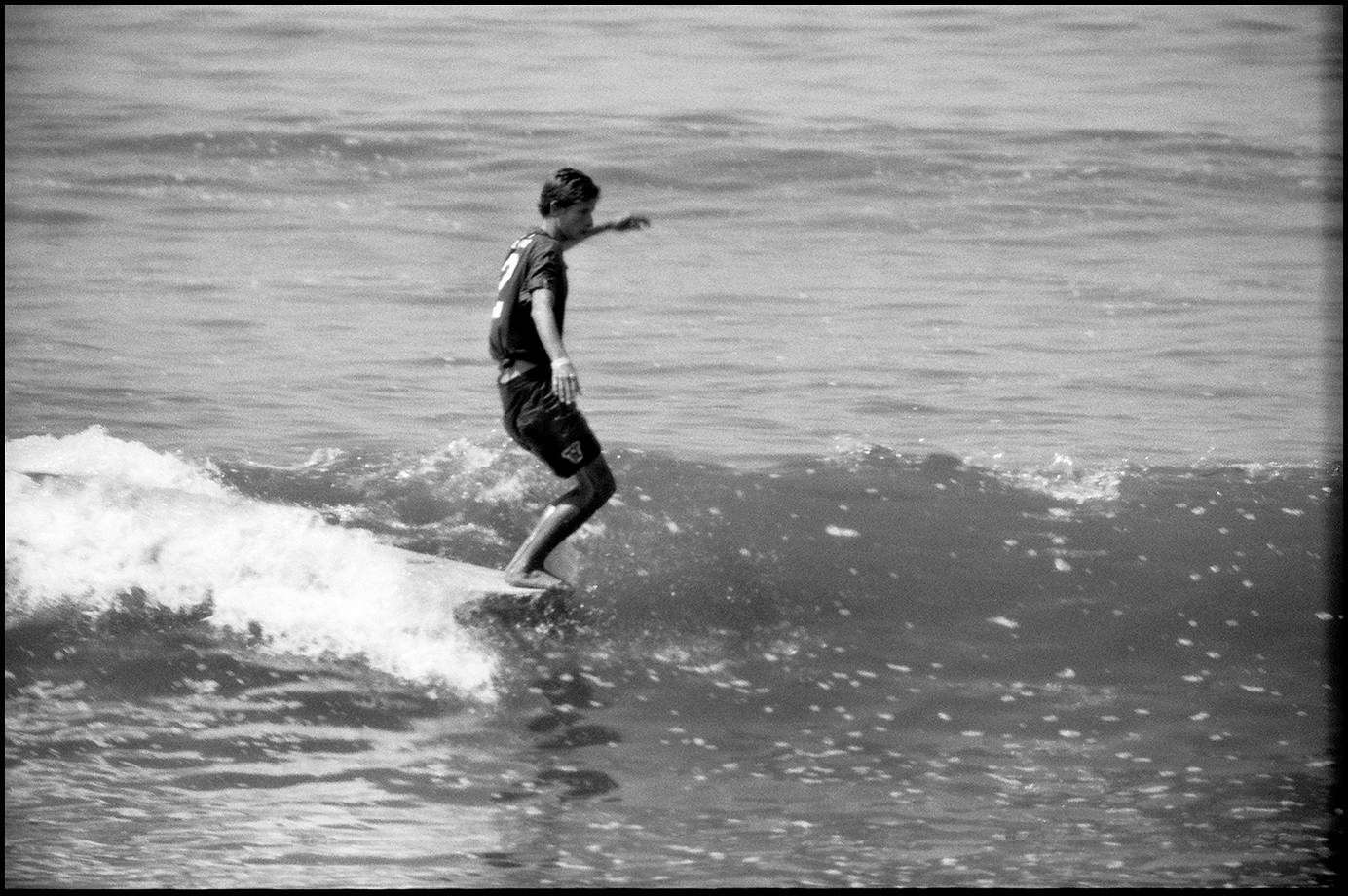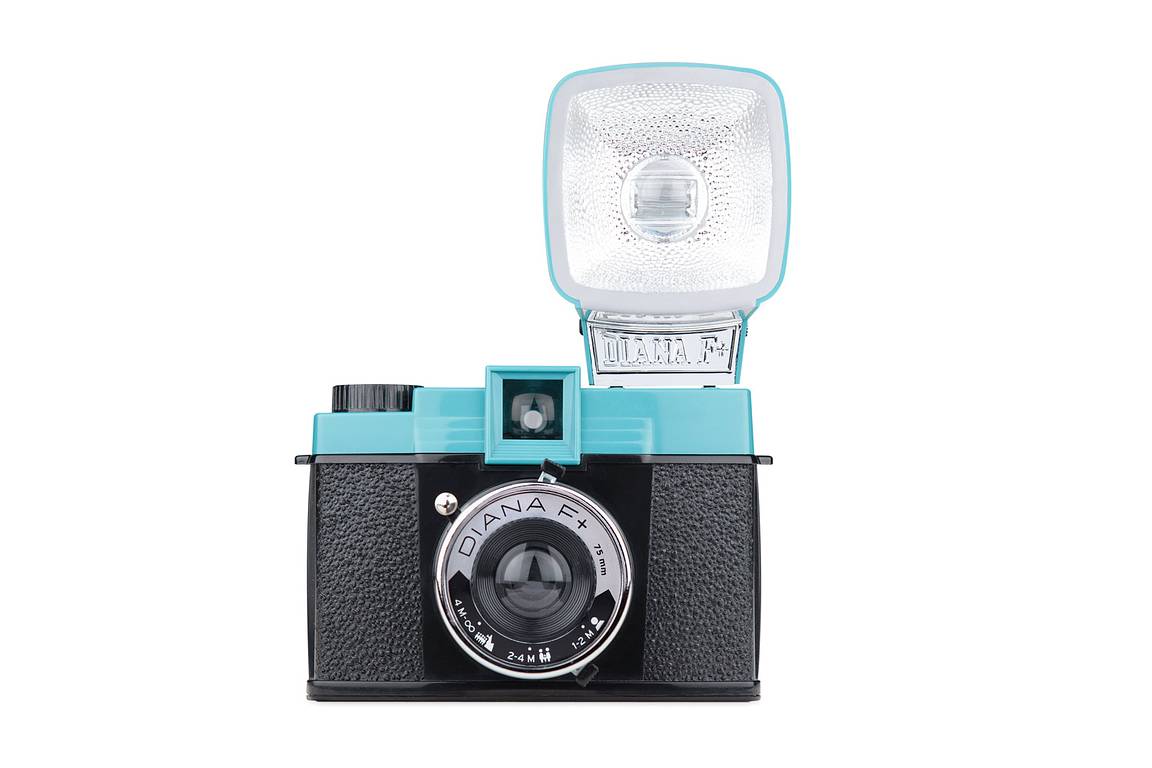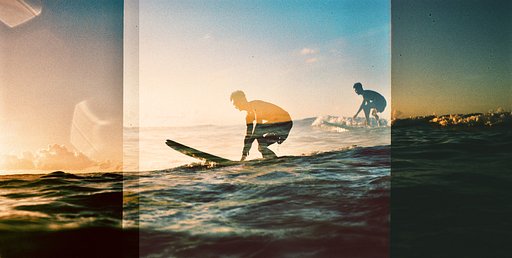Surf and Shoot – An Interview with Tatsuo Takei
5 21 Share TweetHailing from Osaka, Japan, photographer Tatsuo Takei's fulfilling his dream to become one of the most renowned surf photographers and cinematographers of the California longboard scene – in analogue. Immensely moved by the American surfer films of the 60s, Tatsuo left Japan for America in 1993. Four years later, he would kick off his career as a surf photographer. From there, it's all uphill for Tatsuo.
The life and work of Tatsuo are frequent editorial pieces in American and Japanese influential surf magazines like Nalu, Blue, Beached Days, Malibu and The Surfer's Journal. Tatsuo also recently released his book Authentic Wave – his personal 20-year chronicle of traditional longboarding in California. Learn more about his surf-and-shoot lifestyle in our interview.
Hi Tatsuo! How are you doing these days as an artist?
Hello guys, I'm in the middle of a promotional tour of my book, Authentic Wave, in the U.S. It's been a very busy year for me.
Let's start with your body of work. You mostly shoot on surf culture, and for 20 years already. What draws you to the activity?
I'm always interested in two things. One is single-fin longboarding California classic wave. Trying to get action shot looks like 1960s surfing like Hang Ten or Dropknee cutback. Two is single-fin surfers in California. Trying to figure out why or how those surfers are riding single fin longboard and documenting them as much as I can. Those things are very fundamental subjects for my life.

Since you've been chronicling the Californian longboard scene for so long already, may you share to us one or some of your favorite moments or certain photographs, and the story/stories behind it/them?
I have a good story called “Lost Roll”. In the summer of 2000, I got great water session with legendary surfer and shaper Donald Takayama. I used Nikonos II (1967) with a 35 mm lens that day and there was a big wave to shoot in the water. After I finished half roll, I realized that I accidentally put B&W film instead of color chrome. I was so bummed about that because the weather was so perfect to shoot color. At the end of the day, I remembered the B&W negative and put it away somewhere. And that B&W roll of film ended up sitting my drawer in more than 15 years. Donald passed away in 2012. When I found that film in 2017, I immediately threw it away because I couldn't remember what was in it. A few days later, I grabbed that B&W film from the trashcan and brought to the lab and I found a Donald Takayama water shot.
If I developed that the film right away, I could have made prints for him. I was young and stupid. But I'm glad that I saved this roll.
Apart from shooting film pictures, you also work cinematography. When and how did your interest in the analogue medium start?
I started shooting 16 mm film when I was photography student around 2000. I always interested in 1960s surf movies which shot in 16 mm film because the color is so different than the video format what I used to see at that time. It has 1960s Kodakchrome kinda nostalgia. I realized those colors were familiar with all the TV shows back in the 70s when I was a kid, and I watched all those action series. I bought a Bolex camera and lens very cheap in a local camera store in my neighborhood but I couldn't figure out to how to use it. Someone gave me the phone number of the master surf filmmaker – Mr. Bud Browne. I called him one day and asked if he can help me out to start. And I went to his house in Costa Mesa and he showed me how to do it. That was a really cool experience for me someone knows everything about what I want to. Learn from the great master. I was 27 years old back then.
We love the vintage vibe we get from your works, especially when the waves look so ephemeral and the horizon looking endless. Do you have particular intentions when shooting in black-and-white and color negative?
I set my goal of photography and cinematography to get as close as possible to the retro1960s look. I spent many hours of research to find out what kind of camera, lens, and film were used by surf photographers back in the days. I have tons of 1960s SURFER magazines and old surf movie VHS and DVD. Those are my textbooks for surf photography and cinematography. I went through them page-to-page, footage-to-footage.
Do you have a particular favorite surfer to shoot on camera?
Joel Tudor and Makala Smith because they are so technically advanced and photogenic. You won't find any surfers like them anywhere in the world. They are smooth, elegant, and graceful to watch.
California has a lot of beaches. Which are your favorites for photography?
My favorite California beach would be the one in North County San Diego, surf town called Encinitas. Santa Barbara is also my favorite surf town to shoot, too.
If you could spend some time with any photographer, artist or person, dead, alive or fictional, who would it be?
I would love to meet photographers Ansel Adams, Arnold Newman, Robert Frank, and Ron Stoner, a surf photographer. I also want to meet Bruce Brown, who is a surf cinematographer. Man Ray, Georgia O'Keeffe, Yoji Kuri, and Barry McGee come to my mind too.
For you, what's the most important component to consider in your frame of composition?
It's essential to my work that the surfers would have 10 to 15 years of experience in longboarding, with an amicable and good attitude. Wave condition should be one to three feet, glassy (no wind) on a perfect sunny day. For the visual composition itself, I think about the balance of the images and the direction where the sunlight comes from.
What does an ordinary day look like for Tatsuo Takei?
I wake up at 5:30 am. I eat my breakfast before heading off – to shoot and/or to surf – in the afternoon I get my lunch before surfing again. I clean my camera and lens midday, then return to shooting and surfing. Occasionally I read too. In the evening I eat dinner before heading out to the gym to work out. I'm already on my bed by 10:30 pm. That's it!
What do you usually do during your downtime? Any on-going project, or other plans you're keen to work on?
In my extra time, I read. I love reading The New York Times Sunday issue. I take few days to read all sections. I always learn something new form them. When I'm not shooting, I'm trying to encourage local young surfers to learn surfing history and give them a special visit to local surf museum so that they can learn more. I also support young photographers who are interested in shooting analogue film. Those kids will have a great and productive future.
My next project is I'm trying to finish up the surf movie shot on 16 mm film. I'd like to shoot the handmade title and show my movie through the actual projection. Not digital projection. I think this is what we used to do back in the old days. I think people will be very stoked to see that.
Tatsuo is also an advocate of the film medium, having also shot images with his own Diana F+. Surf through his stunning body of work in his website, Instagram and Vimeo for his analogue filmmaking. You may purchase his prints or Authentic Wave at the Treehouse Online Store.
written by cielsan on 2018-12-18 #people #surf-photography #tatsuo-takei


































5 Comments